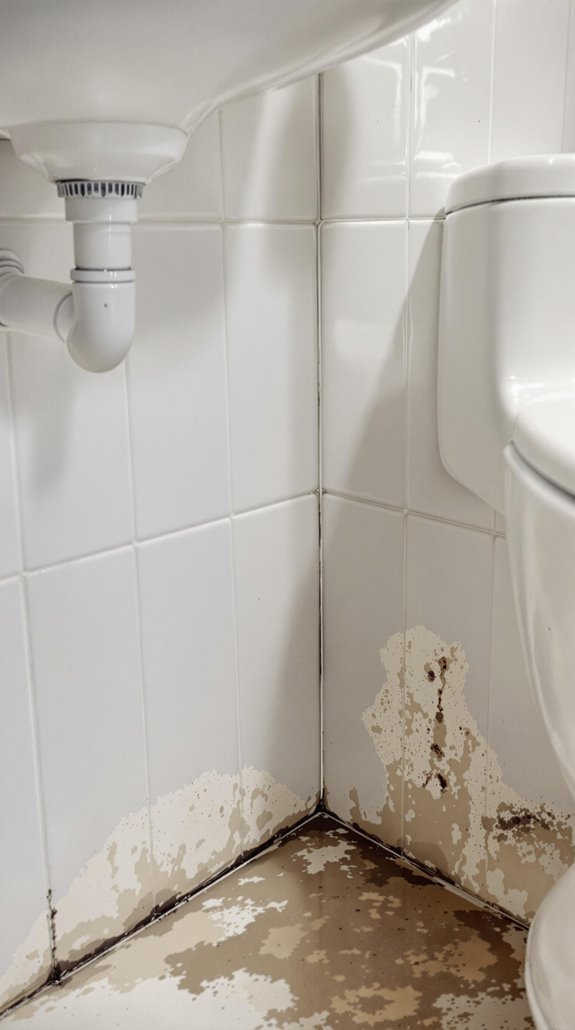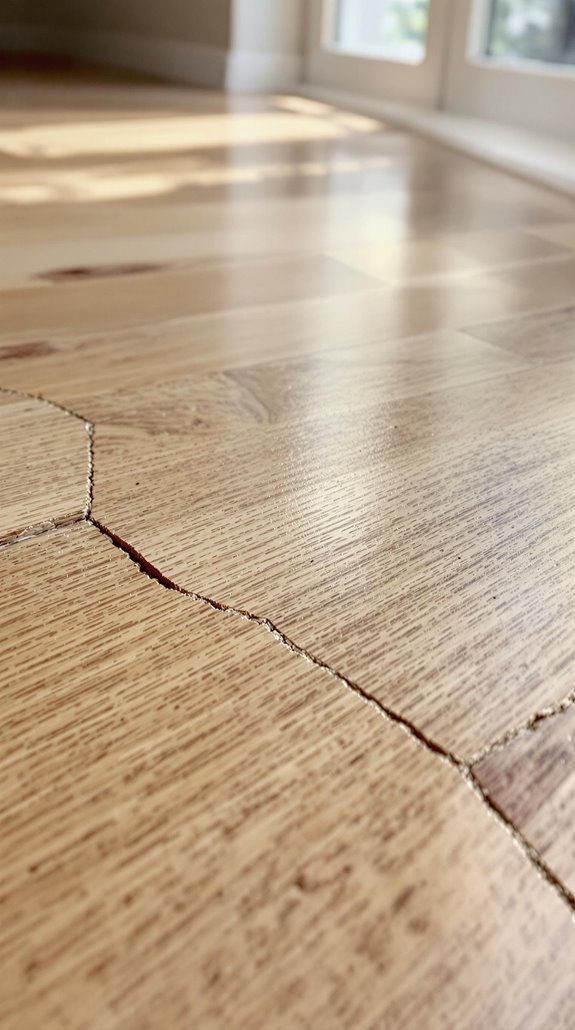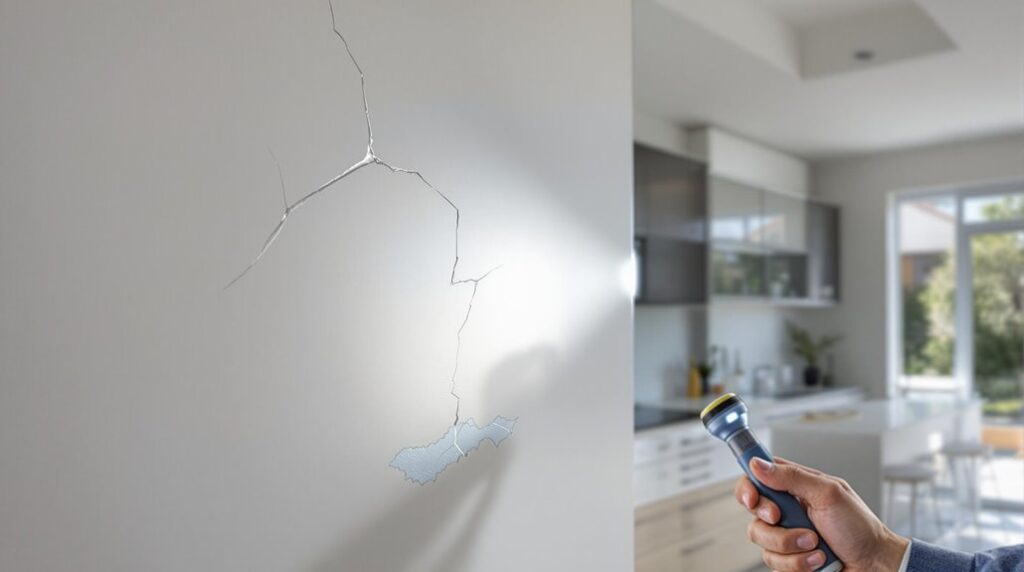I’ve seen too many homeowners overlook critical defects during their new build inspection, only to face expensive repairs months later. While your builder’s warranty covers most issues, there’s a narrow window to identify and report problems before they become your financial responsibility. From hidden plumbing leaks to structural gaps that compromise insulation, these defects won’t always announce themselves immediately. The key lies in knowing exactly what to look for and when to act.
Key Takeaways
- Check for decorative defects like paint inconsistencies, flooring gaps, and brickwork alignment issues before warranty expiration.
- Test plumbing systems thoroughly with pressure testing to identify faulty installations, leaks, and insufficient hot water flow.
- Inspect windows and doors for drafts, misaligned frames, and poor sealing that can cause water intrusion problems.
- Examine electrical systems for faulty wiring, loose connections, inadequate circuit breakers, and flickering lights indicating fire risks.
- Document all defects with timestamped photos and contact the builder’s aftercare team within 30 days for repairs.
Understanding New Build Snagging and Its Importance
Snagging identifies outstanding issues before handover – it’s your final inspection to catch defects that need fixing to meet client requirements. These snags range from minor scratches to major structural, plumbing, and electrical issues that could cost thousands later. Additionally, a thorough snagging process ensures that the property adheres to building regulations, safeguarding your investment from unexpected repair costs.
Think of snagging as your construction safety net. It guarantees the property meets required standards for safety, functionality, and aesthetics while validating final construction against building regulations and contract specifications. Without proper snagging, you’re accepting a property that hasn’t been properly quality-controlled, potentially inheriting problems that should’ve been the builder’s responsibility.
With over 200,000 new homes constructed in 2022/23, snagging inspections have become increasingly vital for ensuring each property meets the quality and safety standards that buyers rightfully expect.
Decorative Defects That Compromise Your Home’s Finish
While structural issues grab headlines, decorative defects silently erode your home’s value and visual appeal every day you live with them. I’ve seen countless homeowners overlook these finishing flaws during their final walkthrough, only to discover them months later when fixing becomes more expensive.
Paint inconsistencies plague utility areas and basements where contractors assume you won’t notice. Streaky coverage and color mismatches create an unprofessional appearance that screams “rushed job.” Additionally, modern design elements can help elevate the aesthetics of your home, making these defects even more noticeable. Flooring gaps from improper acclimatization will worsen over time, while scratches from construction activities permanently mar your investment.
Brickwork alignment issues and inconsistent mortar joints disrupt your home’s curb appeal. Window frames with visible gaps and misaligned hardware signal poor craftsmanship. Inspect these decorative problems from two metres away using natural daylight to identify issues that might be missed under artificial lighting. Don’t let these defects become permanent fixtures—document them now before your warranty expires.
Plumbing Problems and Water Damage Warning Signs

Behind every gleaming fixture in your new home lies a complex network of pipes, connections, and systems that can harbor serious defects from day one. I’ve seen countless homeowners discover faulty installations with incorrect pipe sizes causing restricted water flow and pressure inconsistencies. Poor-quality materials lead to frequent leaks, while substandard fixtures crack and corrode prematurely. Additionally, structural defects can exacerbate plumbing issues by compromising pipe integrity.
Watch for these warning signs: insufficient hot water from improperly installed water heaters, sewage backups indicating severe drain obstructions, and foul odors suggesting ventilation failures. Listen for unusual sounds like rattling pipes or gurgling noises that can indicate underlying plumbing problems. In Northern Utah, tree root infiltration commonly clogs pipes, while inadequate insulation causes frozen pipes in colder climates.
Don’t rely on builders’ testing—many skip thorough inspections, leaving leaks undetected. Demand proper pressure testing and detailed inspections before closing.
Window and Door Installation Failures to Watch For
How often do you notice drafts around your new windows or doors that struggle to close properly? You’re experiencing window and door installation failures that plague 27% of new builds. I’ve seen framers rush installations, leaving gaps between frames and walls that’ll cost you 27% more in heating bills. They’re using budget vinyl like Ply Gem with thin frames that compromise structural integrity. Proper insulation techniques can significantly reduce these energy losses, leading to lower heating costs.
Watch for misaligned frames causing operational difficulties, improper sealing around openings, and missing flashing that invites water intrusion. These defects aren’t just comfort issues—they’re structural risks leading to mold growth and wood rot. Check for adequate moisture barriers and proper shimming during your walkthrough. Don’t accept substandard workmanship that’ll require costly repairs within five years.
Many of these poorly installed windows will start showing failure signs in as little as 5-7 years due to improper installation techniques and corner-cutting during construction.
Flooring Issues That Signal Poor Workmanship

Moving past envelope failures, I’m finding that flooring defects reveal the most about a builder’s commitment to quality workmanship. When I inspect new builds, I immediately check for sloping floors that indicate foundation settlement issues and spongy subfloors that’ll cause your coverings to lift under weight.
You’ll spot poor craftsmanship through loose tiles from inadequate adhesive, uneven grout lines, and visible lippage between adjacent tiles. I always test moisture levels since 85% of flooring failures stem from unchecked subfloor moisture that voids manufacturer warranties, especially if there are signs of damp present. Watch for laminate “peaking” from insufficient expansion gaps and torn vinyl vulnerable to punctures. Don’t ignore squeaky floors, as they typically arise from suboptimal subfloor installations that require professional correction. Concrete shrinkage cracks from high water content and unsealed surfaces allowing water infiltration signal rushed installation that’ll cost you thousands later.
Structural and Insulation Problems You Can’t Ignore
When I assess new builds, structural and insulation defects represent the most expensive problems you’ll face as a homeowner. I always check for foundation cracks, bowing walls, and pest damage that compromise structural integrity. You’ll want to examine interior walls for settlement cracks near doorways and windows, plus any water stains indicating moisture infiltration behind surfaces. Additionally, asbestos tile roofs can pose serious risks if present in older buildings, which may affect your home’s overall safety.
Floor levelness matters—sagging or uneven floors signal compromised joists underneath. I test this using a spirit level across multiple room sections. Always verify that floorboards are secure to prevent future movement and creaking issues.
Insulation failures create costly energy bills. Check if your heating system maintains 70°F at three feet above floor level in living spaces. Poorly insulated water tanks and pipework waste significant energy. Look for condensation on windows and walls, which indicates inadequate thermal barriers throughout your home’s envelope.
Common Electrical and Exterior Defects
Electrical defects pose serious fire risks. You’ll encounter faulty wiring with loose connections, inadequate circuit breakers causing dangerous overloads, and poorly installed switches with misaligned plates. Check for flickering lights and non-compliant electrical panels missing proper labels. Properly installed electrical systems should adhere to updated building codes, ensuring compliance and safety.
Exterior defects compromise your home’s integrity. Poor brickwork with uneven mortar weakens structural stability, while misaligned doors and windows create drafts and security vulnerabilities. Plumbing and drainage issues lead to costly water damage, and cosmetic flaws in external finishes reduce weather resistance. Heating system inefficiencies from poor installation waste energy and money. Poor insulation and ventilation can result in high energy bills and moisture buildup throughout your home.
Address these defects systematically using proper documentation and professional assessment tools.
How to Conduct a Thorough Snagging Inspection
A systematic snagging inspection requires methodical preparation and the right tools to identify every defect before they become costly problems. I’ll gather my torch, spirit level, tape measure, and camera while reviewing property specifications during daylight hours for ideal visibility. Understanding the potential costs of repairs can help prioritize which issues to address first, especially when considering house survey costs.
Starting with exterior elements, I’ll examine brickwork for cracks, check roofing integrity, and test all windows and doors for proper sealing and functionality. Inside, I’ll scan walls and ceilings for plaster defects, test plumbing systems thoroughly, and verify electrical installations work correctly.
I’ll document everything with timestamped photos and detailed notes, prioritizing safety-critical issues. The inspection process typically takes 2 to 6 hours to complete thoroughly, depending on the property size and complexity. Finally, I’ll compile my findings into an extensive report for the developer, ensuring written confirmation of repair timelines and conducting follow-up inspections.
Taking Action When You Discover Snagging Issues
Once I’ve completed my thorough snagging inspection and identified defects, I’ll need to take swift, strategic action to guarantee these issues are properly resolved. My first step involves documenting everything systematically—creating detailed records with photos and extensive notes for each defect I’ve discovered.
I’ll promptly contact the builder’s aftercare team, providing them with my complete snag list and requesting written confirmation of receipt. It’s essential I establish clear timelines for repairs, as snags should be resolved within 30 days under the New Homes Quality Code. Understanding the typical timeline for selling a house can help me gauge how quickly I need these repairs to be addressed.
If issues remain unresolved after this timeframe, I’ll escalate through the builder’s complaint procedure. Should problems persist beyond 56 days, I can refer my case to the New Homes Ombudsman for independent resolution. I should also ensure I receive all necessary documentation including warranties, certificates, and user manuals for appliances and systems throughout this process.
Conclusion
I’ve equipped you with the essential tools to conduct a thorough snagging inspection. Document every defect with photos and detailed descriptions, then submit your findings to the builder’s aftercare team immediately. Don’t delay—you’ve got limited warranty time. Use systematic room-by-room checklists, prioritize structural issues over cosmetic ones, and maintain written communication records. Your proactive approach now prevents expensive repairs later and guarantees you’re getting the quality home you’ve paid for.
References
- https://www.ipgl.uk/latest-updates/top-5-snagging-issues
- https://livelyprofessionalservices.co.uk/common-snagging-defects/
- https://hoa.org.uk/advice/guides-for-homeowners/i-am-buying/need-snagging-list-new-build-home/
- https://www.pettyson.co.uk/about-us/our-blog/743-snagging-list-checklist-new-build-homes
- https://www.tocobrick.com/blog/32-most-common-new-build-snags/
- https://propertyinspect.com/uk/blog/what-is-a-snagging-list-inspection-template/
- https://blog.brightergraphics.com/what-is-snagging-in-construction
- https://consumercode.co.uk/snagging-what-is-it-and-how-does-it-help-you/
- https://www.sablono.com/en/blog/snagging-in-construction
- https://www.letsbuild.com/blog/snagging-in-construction

